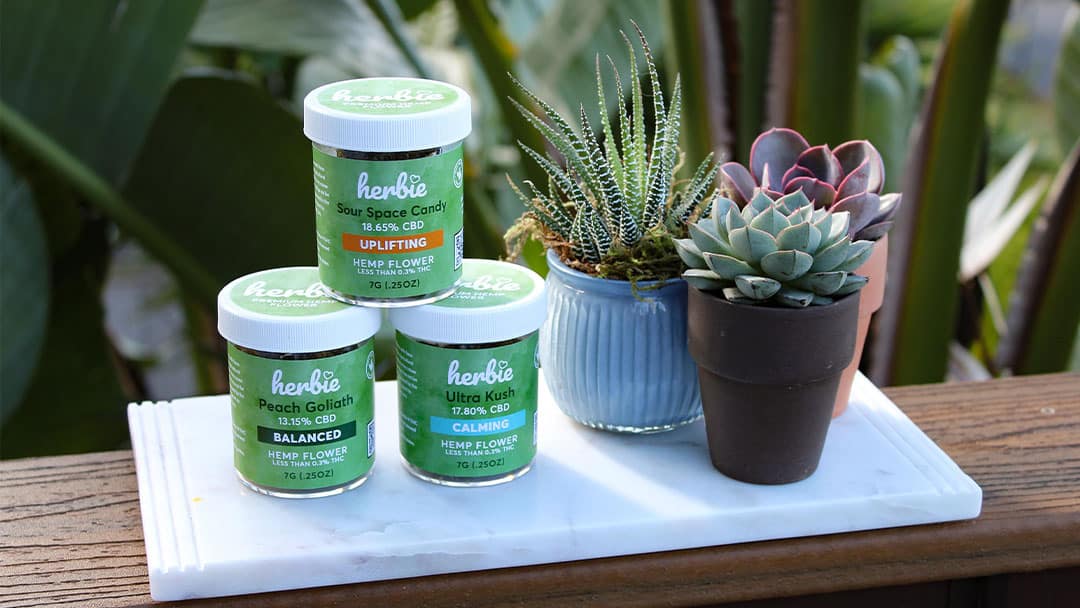Full Spectrum, Broad Spectrum, Distillates, and Isolates

Full-spectrum, broad-spectrum, distillates, and isolates — oh my! These are all types of cannabis extracts and concentrates. The different terms indicate the number of therapeutic chemicals and primary cannabinoids in a product and are a way to convey the diversity of materials in any given extract.
To understand the relevance of these terms and how to interpret them, let's first discuss the endocannabinoid system and entourage effect.
Related: Beginner's Guide to CBD
How CBD Works in Your Endocannabinoid System (ECS)
First, let's start with the ECS. It's a network of neurotransmitters, enzymes, and receptors. Every vertebrate and some insects have this system in their bodies. The ECS plays a crucial role in many regulatory functions, including the nervous, immune, and cardiovascular systems.
While cannabinoids, like CBD and THC, have varying effects on the ECS — as everyone's body is different — other compounds produced in the plant have more while studying unpredictable effects.
Next, let's talk about the entourage effect and its role in the therapeutic use of CBD.
What Is the Entourage Effect?

Defining the entourage effect is relatively simple: it's the theory that different cannabinoids have more favorable effects when delivered together with native phytochemicals, like flavonoids, terpenes, and other cannabinoids.
In theory, the entourage effect manifests to amplify the efficacy and modulate the tolerability of CBD and cannabinoid products. Unfortunately, however, the interactions between terpenes, flavonoids, and cannabinoids are complex. But fortunately, many of these compounds are the study of scientific research and are already commonly found in many commercially processed goods, like food and cosmetics. In addition, plants make thousands of different terpenes alone and can also be synthesized.
Different Types of Cannabis Extracts
Trichomes, the resin glands of hemp and cannabis plants, are where cannabinoids are most abundantly produced. Therefore, before being used in processed products, we must concentrate these glands and separate their oils from the non-useful vegetative matter.
There are two primary ways to do this:
Solvent
With this method, we have a solvent to dissolve the cannabinoids and evaporate them, leaving a concentrated oil. There are two types of solvents commonly used: polar and non-polar.
- Polar solvents, like ethanol, extract polar and non-polar compounds, including water-soluble ones like chlorophyll.
- Non-polar solvents, like butane, dissolves only the non-polar compounds of the plant, including the lipids and oils that make up the trichome heads.
Non-Solvent (Mechanical)
The non-solvent method uses pressure or temperature changes to separate cannabinoid oils. The process typically involves distillation and uses the different boiling points of the plant's constituent chemicals to yield pure extracts. The result of non-solvent extraction typically yields products of 85 to 97% purity.
Related: What Are Cannabinoids?
Full Spectrum CBD

Full-spectrum products contain the maximum amount of native phytochemicals, including THC. The goal of full-spectrum CBD is to remove extraneous lipids and retain an identical ratio of terpenes, flavonoids, and cannabinoids from the original plant source material. True full spectrum CV extracts are less common than you might expect — during most extractions, you lose significant amounts of flavonoids and terpenes because they are much more volatile than the cannabinoids.
Full-spectrum extracts are typically dark in color and have earthy flavors.
Benefits
While we've recently seen more studies on the benefits of CBD, there is much more research on the effects of CBD combined with THC, as found in full-spectrum products. This combination has been found to relieve pain associated with chronic illness and neuropathy.
Disadvantages
Because full-spectrum products contain THC, they can cause a false positive result on drug tests.
Broad Spectrum CBD
Broad-spectrum CBD contains a large number of phytochemicals without THC. Hemp forms the basis of most broad-spectrum extracts and contains THC levels of less than 0.3%. Another way to create broad-spectrum extracts is to add minor cannabinoids, flavonoids, and terpenes to CBD isolate. Or, you can use distillation to remove the THC from a full spectrum extract.
Broad-spectrum CBD extracts are lighter in color and have similar flavor profiles to full-spectrum ones.
Benefits
Unlike products like CBD isolate, broad-spectrum CBD contains additional cannabinoids that work together, leading to the entourage effect. In addition, broad-spectrum CBD contains no or minimal THC.
Disadvantages
Because broad-spectrum CBD may contain trace amounts of THC, it comes with the same disadvantage as full-spectrum products.
Isolate CBD
CBD isolate is the purest form of cannabinoid extract — it's a crystalline powder with 99.9% purity. Isolate is created by undergoing additional solvent processes after the dissolution phase. These additional processing steps are quite expensive; however, it leads to an extremely pure final product.
Benefits
CBD isolate doesn't contain any THC or additional cannabinoids from the cannabis plant, making it the best choice for those who wish to avoid THC altogether.
Disadvantages
The entourage effect offers potential benefits, and isolate products don't contain other compounds to produce it.
Distillate CBD
Distillate extracts are the opposite of full-spectrum CBD — the process removes everything except the cannabinoids of interest. After the solvent extraction, the concentrated oil goes through a distillation process as many times as necessary to purify it. If terpenes or other compounds are reintroduced after the distillation process, it will likely be labeled as broad-spectrum.
Benefits
Distillate products offer more customization and fewer additional cannabinoids other than CBD. You can get distillate CBD with different combinations of cannabinoids to suit your specific needs.
Disadvantages
Although the CBD levels are typically high in distillate products, you are less likely to get the entourage effect than using full- or broad-spectrum CBD.
Related: Ways to Consume CBD
How to Decide Which CBD is Best for You
Full-spectrum and broad-spectrum CBD both offer the potential benefits associated with the entourage effect. Especially for low-dose CBD products, having a diversity of phytochemicals is typically considered a good thing. And beyond those potential therapeutic effects, the additional minor cannabinoids, flavonoids, and terpenes help give CBD a unique flavor, smell, and depth.
By contrast, isolates and distillates offer standardization and consistency — they are a known quantity. Producers of these products have access to a wide variety of flavorings to make their formulas really shine and offer the best consistency of any CBD product.
Looking for the best CBD products to try? Come check out our shop at Herbie to find high-quality CBD, CBG, and CBN gummies, tinctures, and more!
